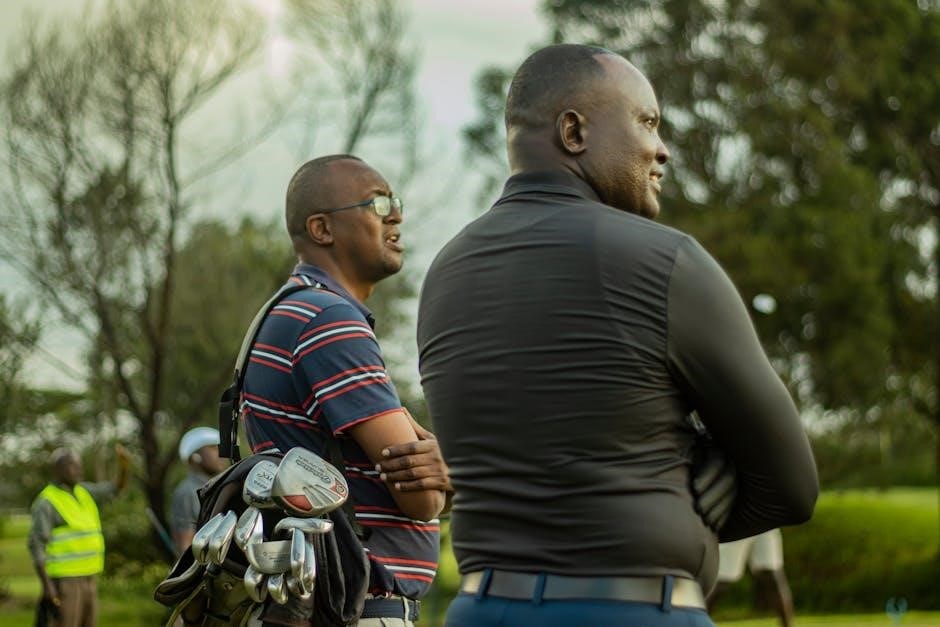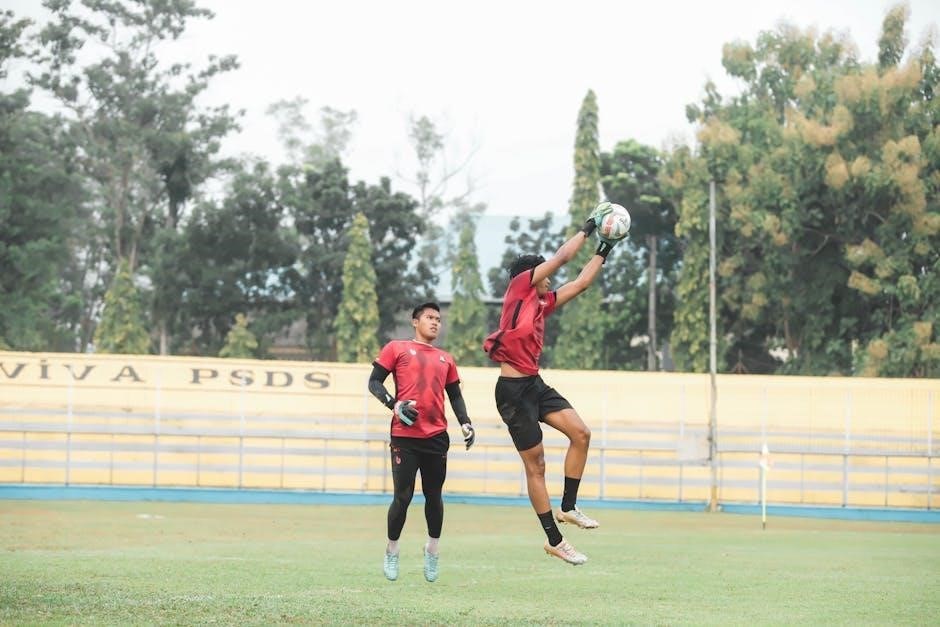Physiology of Sport and Exercise 8th Edition PDF: Overview
The “Physiology of Sport and Exercise, Eighth Edition” PDF continues its legacy as a leading textbook. It helps students explore the body’s responses to exercise through research and visuals. This edition is a favorite among instructors and students alike.
Key Features of the 8th Edition
The 8th edition of “Physiology of Sport and Exercise” is updated with the latest research. It offers easy-to-understand coverage of how nutrition and energy impact exercise. A new chapter focuses on exercise prescription for health. Additional information on cellular signaling and molecular adaptation is included, alongside updated research. The inclusion of “Research Perspectives” aims to make students aware of the latest developments in the field, enhancing the learning experience with digital tools.

Authors and Contributors
The “Physiology of Sport and Exercise 8th Edition” is authored by W. Larry Kenney, Jack H. Wilmore, and David L. Costill. These distinguished researchers, all past presidents of the American College of Sports Medicine, ensure expertise.
W. Larry Kenney
W. Larry Kenney is a distinguished author of the “Physiology of Sport and Exercise, Eighth Edition.” As a leading expert in exercise physiology, his contributions are crucial. He brings extensive knowledge and research experience to the textbook. His insights enhance the understanding of physiological principles related to sports and exercise, making the content valuable and comprehensive for students and instructors.
Jack H. Wilmore
Jack H. Wilmore is a co-author of the esteemed “Physiology of Sport and Exercise, Eighth Edition.” He is a renowned figure in the field of exercise physiology. His expertise enriches the textbook with profound insights and comprehensive coverage. Wilmore’s contributions reflect his extensive research and knowledge, making the book a valuable resource for students and educators seeking to understand the physiological aspects of sports and physical activity.
David L. Costill
David L. Costill is recognized as one of the key authors of the “Physiology of Sport and Exercise, Eighth Edition.” His contributions are instrumental in shaping the textbook’s comprehensive approach. Costill’s deep understanding of exercise physiology enhances the book’s credibility. His research and insights provide students and instructors with an invaluable resource for exploring the complexities of the body’s responses to exercise and sports, solidifying the book’s position as a leading educational tool.

Content Updates in the 8th Edition
The Eighth Edition features new content based on recent research. This includes a new chapter on exercise prescription. There is also updated research on molecular adaptation. These changes enhance the book’s relevance and educational value.
New Chapter on Exercise Prescription
The eighth edition introduces a dedicated chapter focused on exercise prescription for health and fitness. This addition provides current guidelines. It also helps students understand how to tailor exercise programs. The chapter covers aspects of creating effective and safe training plans. It also provides guidance for various populations and fitness goals. This ensures students gain practical knowledge in exercise physiology and application.
Updated Research on Molecular Adaptation
The eighth edition features the most current research findings on molecular adaptation to exercise. This includes insights into cellular signaling and molecular mechanisms. The updated content explores how exercise impacts protein synthesis and muscle function. It also addresses the role of molecular processes in muscle cramps. By incorporating the latest studies, students gain a deeper understanding of how the body adapts to physical activity. This is at the molecular level, enhancing their knowledge of exercise physiology.

Digital Resources and HKPropel Access
The eighth edition includes digital tools through HKPropel Access, enhancing the learning experience. HKPropel provides interactive resources, aiding student comprehension of complex physiological concepts related to sport and exercise.
Benefits of HKPropel Access
HKPropel Access provides students with interactive digital resources that enhance their learning experience. These resources often include videos, quizzes, and other materials designed to help students better understand the complex concepts presented in the textbook. This digital companion supports diverse learning styles and helps students engage with the material more effectively. It also offers instructors tools to track student progress and tailor their teaching.
Availability and Formats
The textbook “Physiology of Sport and Exercise” is available in multiple formats to suit different student needs. These formats include a PDF version and a loose-leaf version, offering flexibility for study preferences.
PDF Version
The PDF version of “Physiology of Sport and Exercise, 8th Edition” offers a convenient digital format for students. It provides accessibility across devices, enabling study on computers, tablets, and smartphones. This electronic format retains all content, including visual aids and research updates. The PDF version can be more affordable and environmentally friendly, perfect for modern students.
Loose-Leaf Version
The loose-leaf version of “Physiology of Sport and Exercise, 8th Edition” provides a flexible and adaptable option for students. This format allows for easy removal and insertion of pages, facilitating customized study. It’s often a more affordable printed option, reducing the overall cost of materials. It allows for personalization through highlighting and note-taking directly on the pages, enhancing the learning experience.

How to Access the PDF
Accessing the “Physiology of Sport and Exercise 8th Edition” PDF is possible through online bookstores. Digital platforms often offer the PDF for purchase or rental, providing convenient access for students and professionals.
Online Bookstores
Several online bookstores provide access to the “Physiology of Sport and Exercise 8th Edition” PDF. These platforms offer a convenient way to purchase and download the textbook instantly. Amazon.com is one example. Students should compare prices and check for special offers. Ensure the PDF is a legitimate and complete version. Digital textbooks provide portability and searchability, enhancing the learning experience.
Rental Options
For students seeking a more budget-friendly option, renting the “Physiology of Sport and Exercise 8th Edition” PDF might be ideal. Online platforms often provide rental services for digital textbooks for a specific period. This can significantly reduce the upfront cost. Students should verify the rental terms. Ensure it aligns with their study timeline. Renting offers temporary access, suitable for short courses or focused study periods.
Conversion to Other Formats
Users can convert the “Physiology of Sport and Exercise 8th Edition” PDF to formats like Word. This is possible using online converters like Smallpdf, Zamzar, or Adobe Acrobat’s export feature, enhancing accessibility and editing capabilities.
Using Online Converters
Converting the “Physiology of Sport and Exercise 8th Edition” PDF is simple using online converters. Platforms like Smallpdf, Zamzar, and Adobe Acrobat offer tools to export PDFs into various formats, including Word. These services generally provide a user-friendly interface where you upload the PDF, select the desired output format, and initiate the conversion. The converted file can then be downloaded, allowing for easier editing or use in different applications. This flexibility enhances the utility of the textbook for students and educators.
Relevance and Use in Education
The “Physiology of Sport and Exercise 8th Edition” PDF serves as a valuable resource in education. It provides students with a comprehensive understanding of exercise physiology, aiding their academic and professional development in the field.
Target Audience
The “Physiology of Sport and Exercise 8th Edition” PDF is primarily designed for undergraduate students in exercise physiology courses. It also serves as a valuable resource for instructors teaching these courses. Furthermore, professionals in sports medicine, athletic training, and related fields can benefit from its comprehensive coverage of the subject matter. The book’s accessible writing style and extensive visual aids make it suitable for a wide range of learners and practitioners seeking to deepen their understanding of exercise physiology principles and applications.
Use as a Textbook
The “Physiology of Sport and Exercise 8th Edition” PDF is ideally suited for use as a primary textbook in undergraduate exercise physiology courses. Its comprehensive content, clear explanations, and updated research make it a valuable learning tool for students. Instructors can leverage the book’s visual aids and digital resources, such as HKPropel access, to enhance their teaching. The inclusion of “Research Perspectives” also exposes students to current topics, making it suitable for the modern classroom.
Earlier Editions and Evolution
Previous editions of “Physiology of Sport and Exercise” laid the foundation for the 8th edition. Each iteration incorporated new research and insights. The latest edition builds upon this history with updated content and features.
Changes from Previous Editions
The eighth edition introduces a new chapter focused on exercise prescription for health and fitness. Furthermore, there’s expanded coverage of cellular signaling and molecular adaptation, alongside discussions on obesity and type 2 diabetes. Updated research includes topics like bioinformatics, big data, and molecular mechanisms of increased protein synthesis. Muscle cramps and peripheral fatigue also receive updated attention. These changes reflect the latest advancements in the field, providing a more comprehensive understanding.
Key Topics Covered
The eighth edition delves into vital areas, notably cardiovascular and muscular physiology. These sections explore how the heart, blood vessels, and muscles adapt and respond to various exercise intensities and training regimens.
Cardiovascular Physiology
Within the eighth edition, the section on cardiovascular physiology comprehensively examines how the heart, blood vessels, and blood adapt to acute exercise and chronic training. It explores topics such as cardiac output, blood flow distribution, oxygen uptake, and the regulation of blood pressure during physical activity. The text integrates updated research on cardiovascular adaptations to different exercise modalities and intensities. This section provides insights into maximizing cardiovascular performance.
Muscular Physiology
The “Physiology of Sport and Exercise, Eighth Edition” thoroughly investigates muscular physiology, detailing muscle fiber types, contraction mechanisms, and energy metabolism during exercise. It covers muscle adaptations to strength and endurance training, including hypertrophy and changes in oxidative capacity. Updated research on molecular mechanisms, such as protein synthesis and cellular signaling, are included. This segment explains muscle fatigue, injury, and repair. Students gain insights into optimizing muscular performance and preventing injuries.
Research Perspectives
The eighth edition includes “Research Perspectives” to highlight new research. This feature keeps students informed about current studies in exercise physiology. It enhances their understanding of scientific advancements and practical applications in the field.
Incorporation of Latest Research
The “Physiology of Sport and Exercise 8th Edition PDF” integrates the latest research findings in the field. This ensures students receive up-to-date information on exercise physiology. New content covers areas like cellular signaling, molecular adaptation, obesity, and type 2 diabetes. Updated research includes topics like bioinformatics and big data. These updates keep the content relevant and aligned with current scientific understanding. This ensures students get a comprehensive view of modern exercise physiology.
